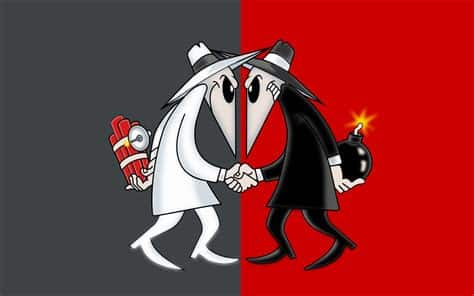Political Pressure — Why The Intelligence Community Fails to Accurately Assess Combat Losses and Military Capability
Following up on my critique of the current US intelligence community’s conclusions in the current Annual Threat Assessment regarding Russian losses, this is not an aberration or departure from standard operating procedure. Instead, it is the natural result of political pressure and bureaucratic cowardice preventing analysts from telling hard truths to political masters.
I had a conversation today with one of my retired buddies. who had a distinguished career with the United States Army Intelligence and Security Command (aka INSCOM). We touched on the topic of the failure of the intelligence community to do accurate predictions about issues like troop strength, casualties and capability. He recounted the experience he had in trying to provide accurate intel on the strength of North Korea’s military force way back in the early 1980s.
My friend, who was a senior non-commissioned officer at the time, worked with a young Army Captain, let’s call him John in the US Army intel section in South Korea. John, using reams of empirical data produced an estimate of North Korea’s military strength that contradicted the existing US Army belief that North Korea was relatively weak. My friend was directed by his commanding officer to review John’s work and expose his flaws. Well, my buddy completed his work and reported, “John’s product is 85% correct.” The commander was not happy to hear that and asked, “what is wrong with the other 15%?” My INSCOM pal replied, “John underestimated the strength of North Korea on those particular issues.”
Now the commander was really upset. According to my friend, if they reported this change in troop strength and capability, it would embarrass the General in charge of that branch of INSCOM, who had certified the existing estimate. Guess what happened? The Army brass buried the new information and, it was only after the General in charge was replaced, that the updated, more accurate estimate was allowed to be presented.
Note, the CIA, at the time, insisted that the troop strength was lower than the estimate that the Army produced. Some accused the Army of pandering to the Reagan administration in order to get more money. By the end of the decade, the CIA finally accepted John’s work as being more accurate than their original projections.
This behavior is not unique to the US Army’s INSCOM. Remember Vietnam? CIA analysts were pressured to alter intelligence on Viet Cong (VC) casualties during the Vietnam War due to political and strategic considerations. George Allen and his lead analyst, Sam Adams, insisted that the strength of the Viet Cong and the North Vietnamese army was far greater than the briefs that General Westmoreland and his intel staff sent back to Washington. The Pentagon was invested in the narrative that US military operations had been so successful that the Viet Cong was on the verge of collapse.
I should note, in passing, that George Allen was my instructor in the New Analyst course, which I attended in the summer of 1986. He spoke openly and passionately about the pressures brought to bear on him and Sam. George admitted that he gave in to the pressure. He was not a wealthy man and had two kids in high school who were headed to college. He could not afford to put his financial future at risk by opposing CIA Director Mccone.
Sam Adams was another story. Sam came from a wealthy family and had, what is known in colloquial terms, fuck you money. The bosses couldn’t threaten him with losing his source of income, so he stuck to his guns.
Let me describe what happened:
Pressure from Military Command: General William Westmoreland, commander of the Military Assistance Command, Vietnam (MACV), actively engaged in efforts to lower the assessed number of VC guerillas in National Intelligence Estimates (NIEs). This was intended to align intelligence reports with his public statements and congressional testimonies that emphasized U.S. progress in the war. Analysts’ conclusions suggesting that the U.S. was unlikely to defeat North Vietnamese forces were repeatedly overruled by commanders who insisted victory was achievable with increased force.
CIA Analyst Dissent: CIA analyst Sam Adams discovered discrepancies between MACV’s order of battle numbers and actual VC strength, concluding that VC numbers were significantly underestimated. Despite presenting his findings, Adams faced resistance from MACV officials and political advisors in Washington, who were reluctant to accept higher VC estimates due to their implications for U.S. policy. Adams accused both MACV and CIA leadership of intentionally distorting intelligence to support a political agenda.
Institutional Compromise: The CIA itself was not immune to politicization. For instance, Director of Central Intelligence John McCone directed revisions to National Intelligence Estimates that presented overly optimistic assessments of U.S. efforts in Vietnam, despite internal doubts among analysts. These revisions were made to align intelligence with policymakers’ expectations, compromising its integrity.
Strategic and Political Motivations: The pressure to alter intelligence reflected broader strategic goals, such as maintaining domestic support for the war and justifying continued military engagement. Intelligence was shaped to “please” policymakers rather than reflect ground realities, contributing to distorted assessments of VC casualties and strength
Things have not changed in the intervening 50 years. If anything, I think the situation today is worse, as evidenced by the release this week of the Annual Threat Assessment. Politics, rather than hard data, take precedence. The failure to produce real intelligence analysis that challenges the policy narrative embraced by the President and the defense community is understandable. Telling the truth can be costly and most analysts, and their managers, prefer promotion over being ostracized or fired.
I discussed some of these issues in three different podcasts over the past two days:




